It seems that growing up in a country where Honda is a major player is an equivalent way of saying that you have spent some time in a Civic or two or ten. The Honda Civic is now the company’s second least expensive model and peddles its wares successfully on the basis of being a perennial best-seller in Canada, a holder of value in the long-term, and a possessor of a lofty reputation as reliable yet fun transportation.
Due to these factors, young Canadians (and Americans), whether driving or being driven, have only lived in a time when Civics were an obvious choice for their parents, fri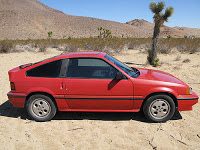 ends, or themselves. In other words, I have been in the passenger or driver seat of more Honda Civics than I can count. Beige, late 80’s 4-door with a 5-speed manual that the owner said had lots of get-up-and-go in third gear. Red, late 80’s CRX (it’s plenty Civic) that refused to die but kept coming back for more despite the young owner’s torture. Purplish mid-90’s Civic coupe that was always being talked about in a way that made me think it would be modified, but was never touched by any speed shop in the way that thousands of other Civics were.
ends, or themselves. In other words, I have been in the passenger or driver seat of more Honda Civics than I can count. Beige, late 80’s 4-door with a 5-speed manual that the owner said had lots of get-up-and-go in third gear. Red, late 80’s CRX (it’s plenty Civic) that refused to die but kept coming back for more despite the young owner’s torture. Purplish mid-90’s Civic coupe that was always being talked about in a way that made me think it would be modified, but was never touched by any speed shop in the way that thousands of other Civics were.
More recent Civics have seen me take up residence in front of the steering wheel more than the older generations. Automatics and manual; hatchback Si or 4-door sedan; well-equipped or slightly less well-equipped.
The list could go on, but, this article is actually about the most recent Civic. You know the one. The windshield is raked back daringly. The trunk looks small but isn’t. The wheels better fill the wheel arches. Headlights are narrow slits and the car as a whole looks distinctly more modern than previous iterations, however handsome they may be with 19 inch wheels, a lower front air dam and side skirts.
If you are car shopping, there’s a good chance you have thought about buying one, bought one, or at least peeked in the Civic parked in the spot next to you at the grocery store when you noticed in your periphery that the interior was strikingly unique. Honda calls the two-tier instrument panel ‘space-aged cool and super functional’. I don’t know what NASA’s Discovery shuttle has for an instrument panel, so I can’t back up the claim of space-aged coolness, but I do know that Honda decided to take a touch of a risk in our somewhat conservative North American automotive market.
You could say the emperor has new clothes, but it goes beyond new clothes. More powerful engines, more features, more control once on the move, and more comfort. Critics decried the move away from a front wishbone suspension on the previous generation and some are apparently scared off by less ordinary styling on this generation. North American consumers, however, gobble up Honda Civics like quarter-chicken-white-meat-with-fries-and-dipping-sauce.
Why? For the little things and the big things. The wheelbase of a current 4-door Civic is within 20mm of an early 90’s Accord. Yet the car as a whole is about 20cm shorter from bumper-to-bumper. This means a shape that is tidier overall, more easily maneuvarable, yet spacious inside. The new Civic, always Honda’s small car, is now wider than the Accord was in 1992. Its 4-cylinder engine is around 400cc smaller, yet produces as much, or more, horsepower than that Accord. Compared with 2005 Civics, the latest Honda enters the game with a couple dozen extra horses under the hood while achieving the same highway mileage.
For companies that consistently perform at the head of the class it becomes preternatural to compare the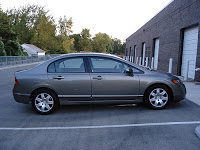 ir new vehicles with competitors – but even more so with the previous incarnation. Step out of a previous-gen Civic and into the new edition and you will notice the interior and exterior styling differences right off the bat. Typically Honda-like, the controls reside where you want them, everything feels as though it will stay glued, welded, or hinged together, and visibility is decent all around. Soichiro Honda was the company’s detail-oriented founder, and when you grab hold of a steering wheel that has a proper circumference and feels good in the hands you realize the fruit of his labour. Doors thunk nicely, gauges are perfectly legible (and you become transfixed by the digits on the upper tier), the seats hold driver and passenger firmly in place.
ir new vehicles with competitors – but even more so with the previous incarnation. Step out of a previous-gen Civic and into the new edition and you will notice the interior and exterior styling differences right off the bat. Typically Honda-like, the controls reside where you want them, everything feels as though it will stay glued, welded, or hinged together, and visibility is decent all around. Soichiro Honda was the company’s detail-oriented founder, and when you grab hold of a steering wheel that has a proper circumference and feels good in the hands you realize the fruit of his labour. Doors thunk nicely, gauges are perfectly legible (and you become transfixed by the digits on the upper tier), the seats hold driver and passenger firmly in place.
I drove a DX sedan and came to a few conclusions. 140 horsepower is more than 117, and the trademark VTEC kick – now i-VTEC – was subtle but welcome in the upper reaches of the tachometer. The shifter was excellent, although the clutch did not have quite enough travel and was a little difficult to master quickly. The driving experience as a whole was not significantly different from the former generation of Civics, but the differences are easily defined. Better high-speed stability, flatter cornering, a more mature-feeling car that is also more fun, and the detectable power increase.
It comes as no surprise to anyone when they read positive comments regarding a new Honda. When the neighbour, cousin, friend, and co-worker all drive a Civic, you had already figured there were reasons.


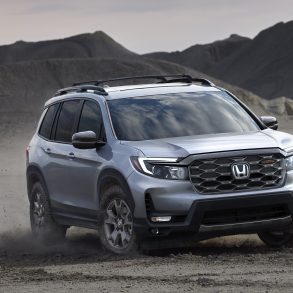
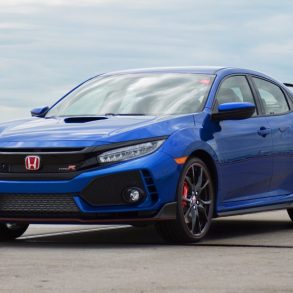
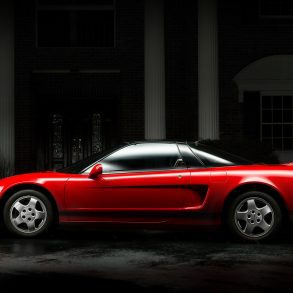
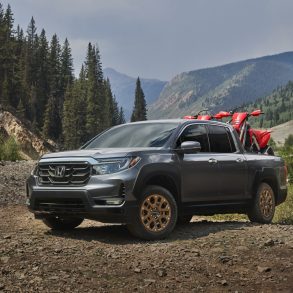
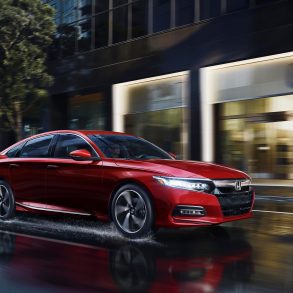
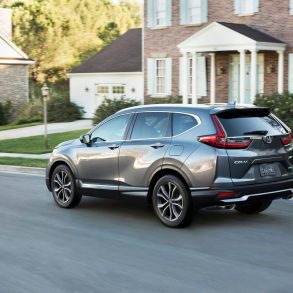
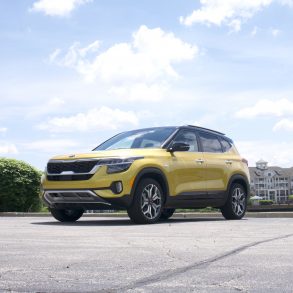
Hey Tim, great page!
I have a question about the new Honda Civic’s and Accords. I recently heard someone say that people were complaining about the electronic assisted stearing… Have you heard anything?
Thanx, S. Kember
As far as I know, the Accord has not succumbed to leccy steering. The Civic’s system is one of the better electric systems, but it’s steering (as an exclusive part of the car) is not as good as it was in older generations of Civic’s. For many people, it’s better. For feel and confidence in direction – not so much. The best combo is electro-hydraulic as seen in Euro Ford Focus’ and others, offering the efficiency gains of electric steering while maintaining better interaction with the driver’s hands.
What about the problem with the rear suspension that is causing excessive tire wear? I felt vibration in the steering wheel in my 2007 Honda Civic and last fall the dealer adjusted the tow and cam and gave me new rear tires. Now six months later I am back with the same problem and they say my Honda warranty will cover the replacement of the Rear upper control arm but not the tires. This seems to be a design flaw as there are numerous posts on various websites reporting the same problem. Whats up with that?
I bought a new 2007 Honda Civic in 04/07. since owning this car I have come to the conclusion that I would never buy another. At 63k the block cracked, the visors have been replaced and my rear tires wear uneven. Please keep in mind that I am an automotive mechanic and I am a perfectionist. I now have 72k on the Civic and bought my wife a Toyota Corolla. Its quiter and gets better mileage.
Glad to hear that you like the Civic, I did too, until yesterday. My 2006 Honda Civic LX (manual) with 71,000 miles has a cracked block that must be replaced with a new engine (around $3000+). If you, and your readers, Google TSB 08-044, you'll find that most of the 2006,2007 and 2008 Civic Sedan's on the road will probably suffer from a cracked engine block at some point. And it may seem sooner than you think. There is no warning, your temperature gauge goes all the way up and you seize the engine quickly. Honda will only pay for 50% of their design or casting flaw if you're like me and drive 36,000 miles a year. I followed the Honda schedule for all oil and service and HAD IT PERFORMED AT THE DEALERSHIP, but it didn't matter. In 35 years of owning vehicles, I have NEVER had a cracked engine block and I feel that Honda owes it to their customers to increase the drivetrain warranty to 10 years or 100,000 on these vehicles. Why should I pay for their design or casting flaw?
Not happy with honda civic at all. I donot know why people buy if the plus point is only gas consumption.Pick up is not good, when you press paddle ,it gives sound only but does not respond for speed,if I turn on Ac upto max then it cools but not upto extent of 6 cylinder cars. Sound system is also not good, donot enjoy songs, I donot turn on sound system.Gas consumption is also not satisfacory.Now I have to retin this as I purchased new one, net time, I,ll buy American cars but 06 cylinders, may be gas consumption more but so many features in those cars and are comfortable as well as safe.
doublee